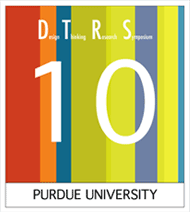Description
Drawing from the prior work of McNair and Paretti (2010), this study investigates how language practices and design artifacts mediate the interactions among novice and expert designers to shape the nature of design, and specifically design learning. By analyzing data collected from two design courses in different fields, this study addresses two research questions: 1) how do language practices mediate the interactions between design mentors and design learners; and 2) how do design artifacts mediate these interactions between mentors and learners? Drawing on activity theory and discourse analysis, we use these questions to explore how students work with experts to make meaning within their design experiences. In doing so, we treat meaning-making as an array of social processes situated within a complex activity system that includes instructors, professionals, team members, and artifacts.
Keywords
Activity theory, discourse analysis, speech acts, design thinking, design identity, design education, engineering education, industrial design
DOI
10.5703/1288284315950
Included in
Learning and Becoming in Design Reviews
Drawing from the prior work of McNair and Paretti (2010), this study investigates how language practices and design artifacts mediate the interactions among novice and expert designers to shape the nature of design, and specifically design learning. By analyzing data collected from two design courses in different fields, this study addresses two research questions: 1) how do language practices mediate the interactions between design mentors and design learners; and 2) how do design artifacts mediate these interactions between mentors and learners? Drawing on activity theory and discourse analysis, we use these questions to explore how students work with experts to make meaning within their design experiences. In doing so, we treat meaning-making as an array of social processes situated within a complex activity system that includes instructors, professionals, team members, and artifacts.


Comments
This conference presentation was developed into a book chapter that was published in “Analyzing Design Review Conversations,” edited by Robin S. Adams and Junaid A. Siddiqui (2016, Purdue University Press), which can be found here:http://www.thepress.purdue.edu/titles/analyzing-design-review-conversations.